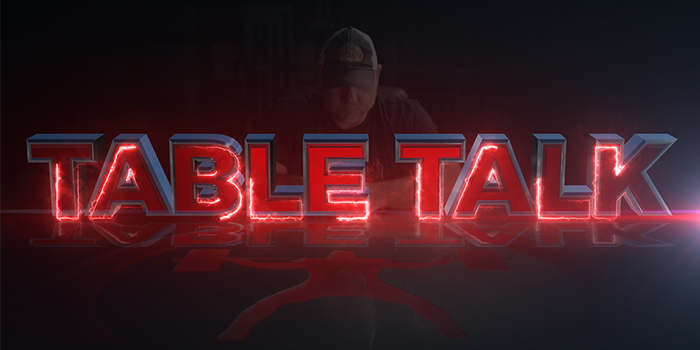
Without experience or guidance, it can be challenging to make sense of all of the variables in a conjugate method training program. All of the factors you have to account for—combined with the vastly different opinions you can find online—makes the training method seem incredibly complex. But it doesn't necessarily have to be. For today's Table Talk, Dave responds to a question about using the conjugate method:
"What are the best tips for a raw conjugate lifter?"
First Dave says that the raw part doesn't matter. Raw or equipped, single-ply or multi-ply, it doesn't make a difference. The main tips you need to follow are the same. In no specific order:
1. When you do max effort work, shut down the max effort work if your technique begins to fail. If there's technical failure, you're done.
2. If there isn't technical breakdown during your max effort work, you need to really push it as true max effort work. Shoot for somewhere between two and four total repetitions over the 90% range. This might be singles, sets of two, or triples. You want to stay in that range but never exceed it.
3. Understand that dynamic effort means applying as much force as possible to the bar. It doesn't matter what progression, cycle, or system you use if you aren't doing this correctly. Dave's general method for figuring out what range of weights to use is to work up in weight to 50% or 60% of your one-rep max. As long as you can maintain bar speed as you increase weight, you can keep adding weight to the bar. If the bar slows down, you've gone too far. No matter what percentage you want to use, this applies. Whether you're using chains or bands, this applies.
4. Don't forget the rep work. This program is built on dynamic effort, max effort, and repetition effort work. There's a lot of focus on dynamic effort and max effort work, but you have to intelligently apply the repetition effort to your accessory exercises, focusing on the right strengths and weaknesses. Many lifters fail with this program because they don't train the accessories hard enough. These are the exercises that are going to build the max effort and dynamic effort lifts, which directly determine the strength of your main lifts.
5. Don't let it become too complicated. There are a lot of variables and you can make this system as complicated as you want it to be, but you can also make it as simple as you want it to be. Start by understanding the basics and then later you can worry about the complexities. Focus on the simple parts first and understand those fully, because that's the biggest battle.










